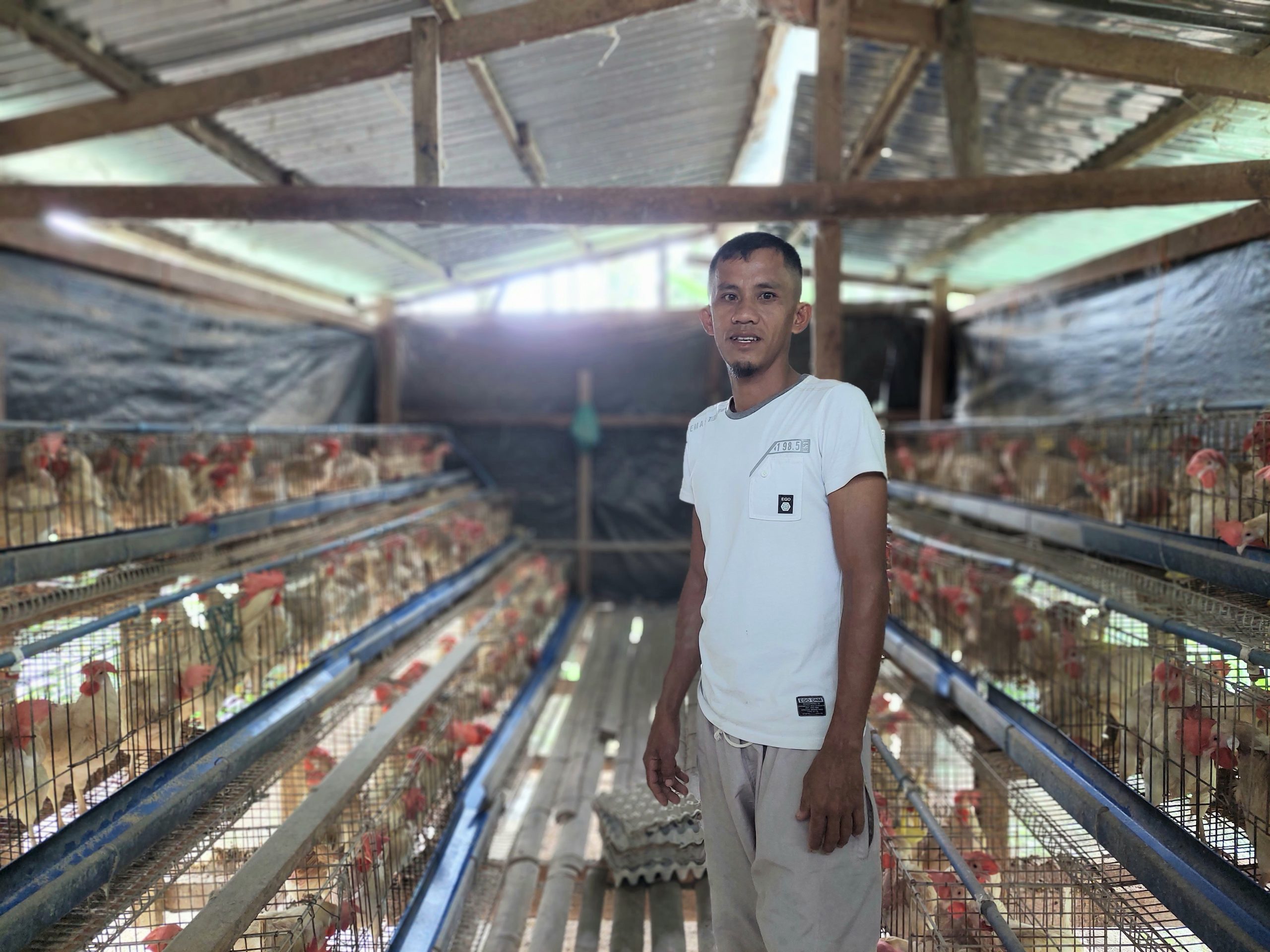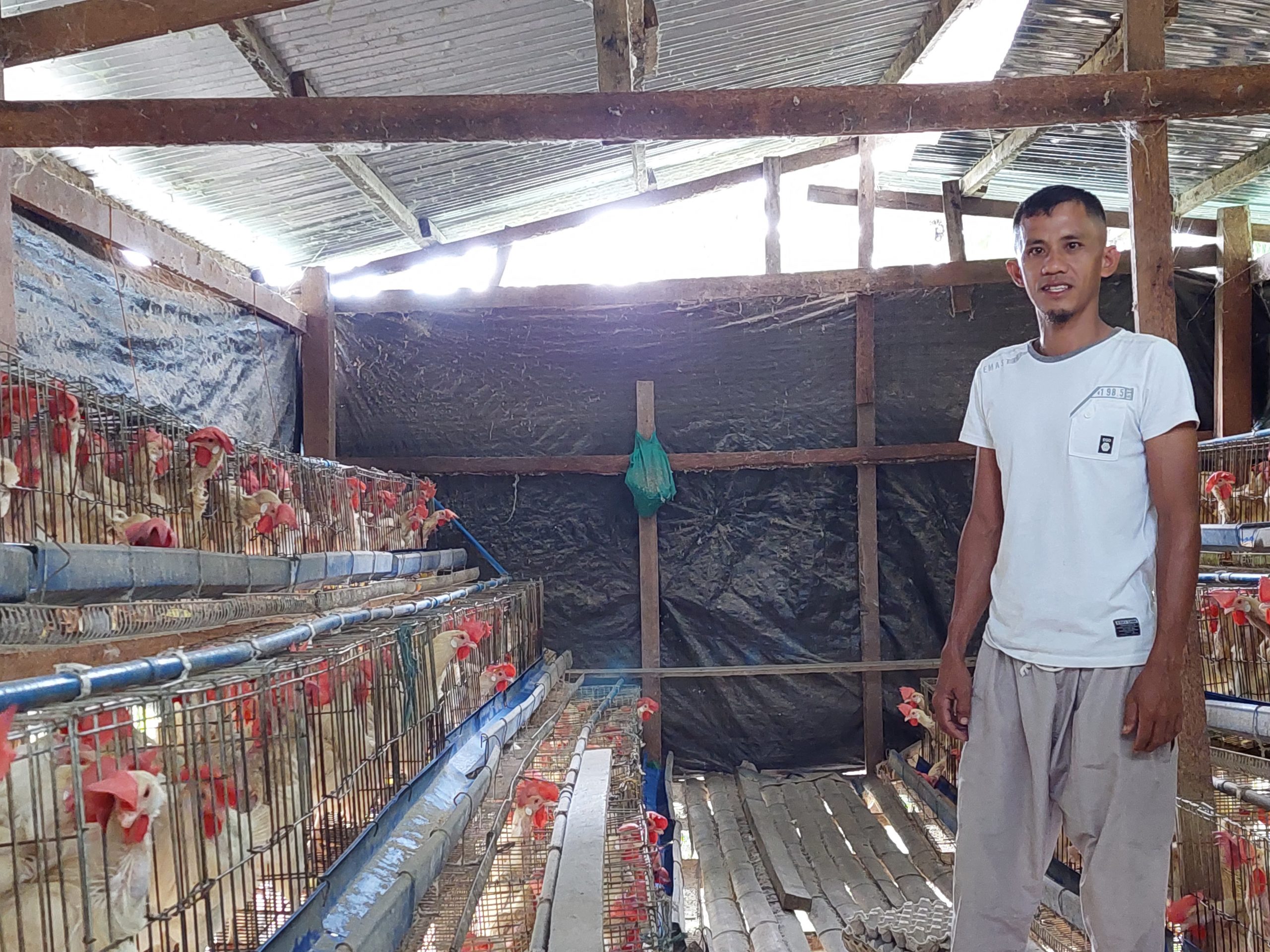Mr. Emam’s life before and during the onset of CoViD-19
The more that the health system issues have become even more glaring in the country, the more that it has been much harder for the less fortunate people. It pushed them even farther behind – job loss, less income, and scarred livelihoods.
To address the said concerns, the Department of Agriculture (DA), as the responsible agency for ensuring a food-secure Philippines with prosperous farmers and fisherfolk, provides interventions to speed up recovery, reduce poverty, and promote inclusive growth. One of its programs that helps the marginalized sectors is the Special Area for Agricultural Development (SAAD) Program.
After a year of the CoViD-19 crisis, the program implementers sat down with the beneficiaries and chatted about what life has been for them over the past 12 months.
Aminodem Emam, 31, a father of a toddler and a newborn baby, is a tenant of a 2 hectares (ha) area planted with corn and coconut as his family’s main source of income. However, his earning is just enough for their daily needs. Income from corn and coconut is every three months, of which one-fourth is surrendered to his landowner. With this system, he always resorts to borrowing for his daily food consumption and other essentials from a relative’s store.
Mr Emam´s life was cruel because he was considered a hand-to-mouth existence, especially during the pandemic.
In March 2018, Mr. Emam along with 24 farmers organized themselves as Paridi Corn and Coconut Farmer’s Association (PCCFA) in Nunungan, Lanao Del Norte. They hope the group would easily get assistance from the government and other agencies.
During the pandemic in 2019, the municipality was chosen as one of the program recipients with PCCFA as the beneficiary.
How the 6 members of PCCFA benefited from the SAAD’s Egg Production Project
On September 15, 2020, PCCFA’s 25 members received each Php 74,000 worth of Egg Production Project under FY 2019 funding worth Php 1,850,000. This includes 48 ready-to-lay chickens, layer cage, chicken feeds, egg tray, biologics, and poultry shed materials.
Mr. Emam together with five other members combined their cages in one poultry house. He acted as the caretaker. He fed the chickens thrice a day, supplied clean water, provided the right amount of vitamins, and collected the chicken dung.
After three months, in January, they started to market their eggs weekly in Sultan Naga Dimaporo.
Documenting the harvest for each members is crucial, that’s why Mr Emam made sure to record each members egg production.
From January to August 2021, Mr. Emam and the other five members of PCCFA gathered 1,697 trays of eggs and sold them at a price range of Php 160-200 totaling to Php 289,780 in just eight months (Table 1).
With the SAAD’s chicken production project, each member of PCCFA earned Php 1,500-1,700 a week just by selling eggs in Sultan Naga Dimaporo’s local market. Table 1. PCCFA Chicken Egg Production Income (6 members)
| Month (2021) | Total Eggs Harvested (Tray) | Sales | Total Sales (Php) |
||||
| Small | Medium | Large | Extra Large (Php 190) |
Jumbo (Php 200) |
|||
| (Php 160) | (Php 170) | (Php 180) | |||||
| January | 240 | 19,200.00 | 11,900.00 | 8,500.00 | – | – | 39,600.00 |
| February | 241 | 19,040.00 | 11,900.00 | 9,360.00 | – | – | 40,300.00 |
| March | 250 | 18,400.00 | 13,940.00 | 9,540.00 | – | – | 41,880.00 |
| April | 228 | 16,800.00 | 11,050.00 | 9,900.00 | 570.00 | – | 38,320.00 |
| May | 210 | 13,920.00 | 8,840.00 | 7,740.00 | 4,370.00 | – | 34,870.00 |
| June | 180 | – | 13,260.00 | 13,500.00 | 2,850.00 | 2,400.00 | 32,010.00 |
| July | 180 | – | 11,560.00 | 15,300.00 | 2,850.00 | 2,400.00 | 32,110.00 |
| August | 168 | – | 6,290.00 | 10,800.00 | 11,400.00 | 2,200.00 | 30,690.00 |
| TOTAL | 1697 | 87,360.00 | 88,740.00 | 84,640.00 | 22,040.00 | 7,000.00 | 289,780.00 |
As a caretaker, Mr. Emam also gets paid Php 150-200 a week for taking care of the other’s five chicken cages including fuel expenses during the delivery.
Mr. Emam said that the said project is giving him high revenue in a short period of time. He also added that this can provide both income and employment opportunities to unemployed educated youth by raising poultry commercially.
Group Status
The association has a monthly regular meeting wherein they update the status of the received project, sharing different concerns and problems, and creating ideas on how to improve their ways to sustain it.
The Php 50 per member monthly due is also collected during the meeting, which will be used to buy feeds and antibiotics. It can also be used as loan money with a favorable interest to their fellow members.
Challenges from PCCFA’s Poultry Farming
In June, Mr. Emam noticed that some of his chickens show symptoms of bird flu, like swollen eyes and colds, caused by the rainy season. With that, he quarantined all of those with symptoms in a separate area and provided them vitamins and antibiotics. Unfortunately, five of his chickens died, leaving him only 43 heads.
However, this did not hinder him from continuing the project since he and the other members are earning from it. He just had to carefully manage the poultry by giving the right amount of vitamins and supplements to boost their immune system.
Target of PCCFA’s chicken production project after two years
The members said that they will continue the SAAD project even though the chickens will stop producing eggs and be sold for culling in two years. They already planned to gradually replace the old with the new ones.
With the money they saved for each members’ weekly earnings, it would be easier for them to buy new layer chicken.
Also, they believe the project could be a potential poultry farming business where they could market chicken eggs and poultry meat.
For Mr. Emam, he paid his debt and no longer depends on it. ###
Writer: Ruth Esther Bermundo, SAAD Normin Information Officer
Copy Editor: Jennifer Valcobero, SAAD NPMO Public Relation and Comms Officer



Comments (0)